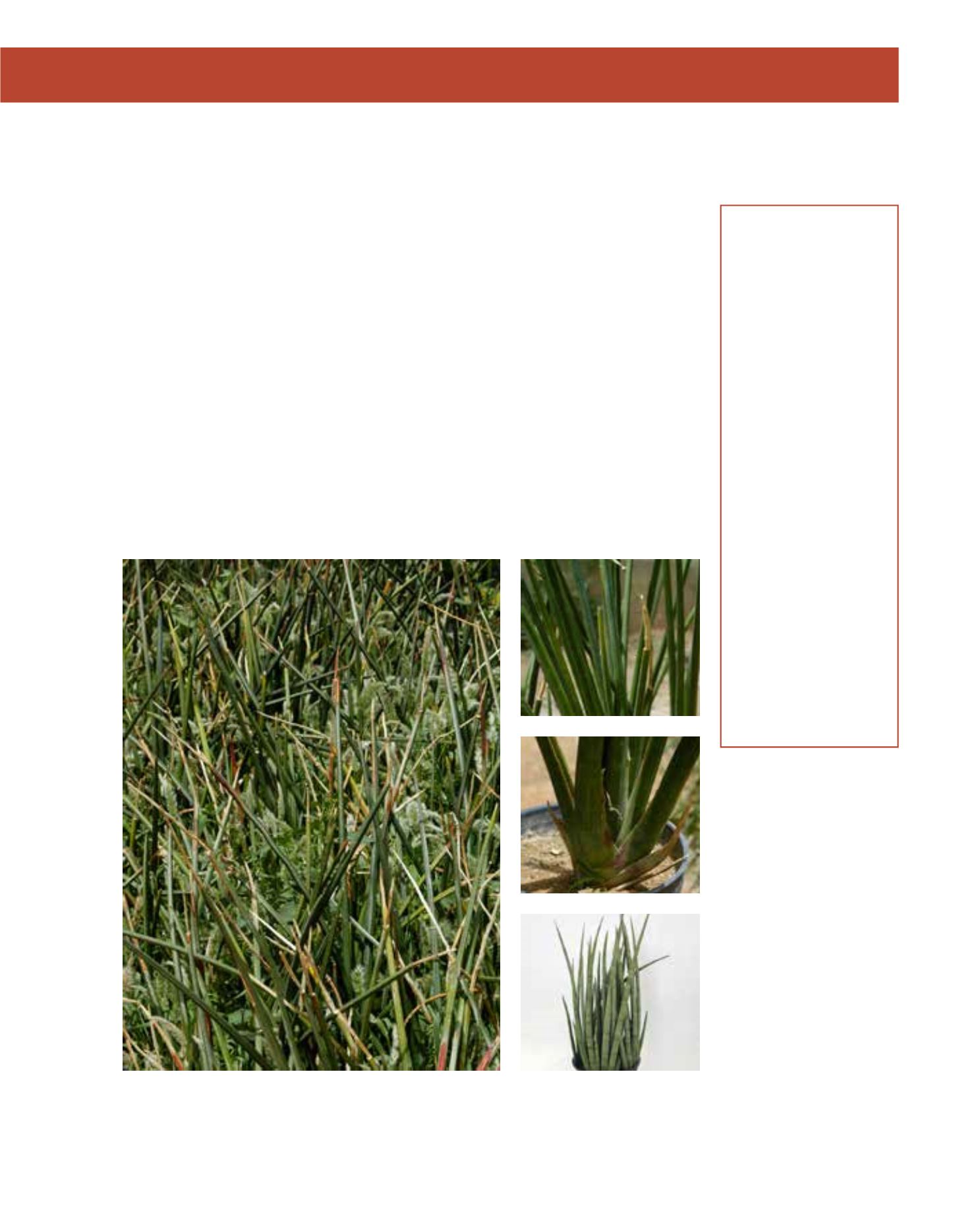

GENERAL
Origin
:
sub-tropical,
tropical
Vigour
:
slow-growing
Humidity
:
semi-humid, very
humid
Propagation :
cuttings, division
Maintenance :
low
CONDITIONS
Urban climate :
vulnerable
Dessication :
vulnerable
Stagnant water :
vulnerable
Irrigation
:
medium
Salinity/ppm :
moderate (2500
ppm)
Hardiness
:
+3°C
SHAPE
Type
:
cacti, succulents
Height
:
0.6 m-1.5 m
Spread
:
0.3 m-1 m
Foliage
:
evergreen
FLOWER
Colour
:
white, secondary:
pale pink
Period
:
June - July
Smell
:
scented, flower,
sweet
FRUIT
Type of fruit :
berry
Fruit size
:
0.6 cm
Toxicity
:
inedible
Sansevierias are grown for their ornamental sculptural appearance. They form evergreen leaves
with narrow grooves grown from the base that build stiff pointed peaks, round in circumference.
Rings in lighter and darker green alternate horizontally, making this plant attractive all year
round. In time, they become dense clumps up to 0.6 to 1.5 metre high. Several leaves form fan-
like sprays and spread underground by rhizomes. They are easy to propagate by removing suckers
or dividing mature clumps. Flowers are pollinated by moths, and accordingly the flowers open
at night and emit a very pleasant scent. The flowering stalk may reach 0.9 metres height bearing
pink buds that open to produce white cups. After the flowers are spent, the fan usually dies, but
will soon be replaced by new shoots emerging from the fleshy rhizomes. Its drought tolerance
makes this plant one of the toughest indoor plants and an impressive succulent for rock gardens,
where it makes a dominant specimen. A small-scale plant for gardens, it does well in containers
or in pool areas. This species is native to the scrub and light woodland of Angola. Recently intro-
duced into Arriyadh, it revels in full sun, but does better in partial shade. The soil may be poor or
contain moderate nutrient levels. Excellent drainage is essential, because the plant is vulnerable
to stagnant water. Constant moisture results in root rot. The soil should be allowed to dry before
being watered again. The plants will cope with hot, arid climates, and either acidic or alkaline soil.
270
Sansevieria cylindrica,
Dracaenaceae
Spear Sansevieria
















